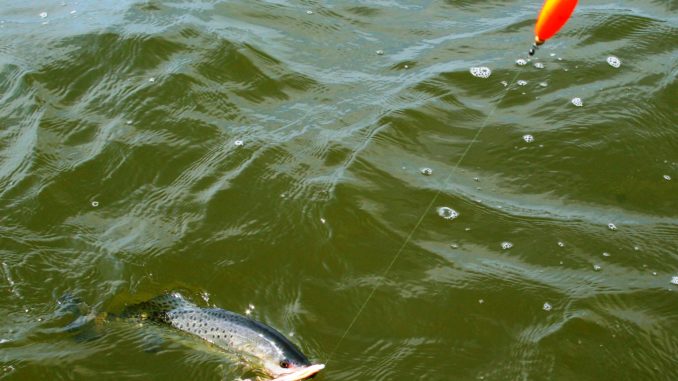
Guide Bryan DeHart said speckled trout will feed anywhere from the surface to the bottom, with the preferred depth on any given day a complex combination of bait, water temperature and light. Where the bait is in the water column and how it is moving are the most-important factors, but the others also affect how and how aggressively the trout pursue the bait.
Trout usually feed on mullet, glass minnows, small menhaden and shrimp. Most lure companies make lures that resemble these baits, and it is possible to match the kind of bait that’s most prevalent. However, sometimes trout can be attracted by sound and scent and will strike things that don’t appear naturally in their habitat. It’s an educated guess at best, and the willingness to change lures, baits and tactics can be critical for success.
Trout typically pick baits off the surface during periods of lower light such as early morning and late afternoon. Overcast days can extend the topwater bite. Fishing the mid-depths is accomplished two ways: suspending a bait at a set depth under a cork, either silent, rattling or popping; or using suspending lures that sink to a certain depth and hover.
Working to the bottom, DeHart likes to use soft plastics on jigheads. He can use a heavier jighead when the water is moving faster or when fishing deeper and switch to a lighter head in shallow water to get more natural movement. For soft plastics he uses paddle tails, shrimp shapes and Fluke shapes.




Be the first to comment